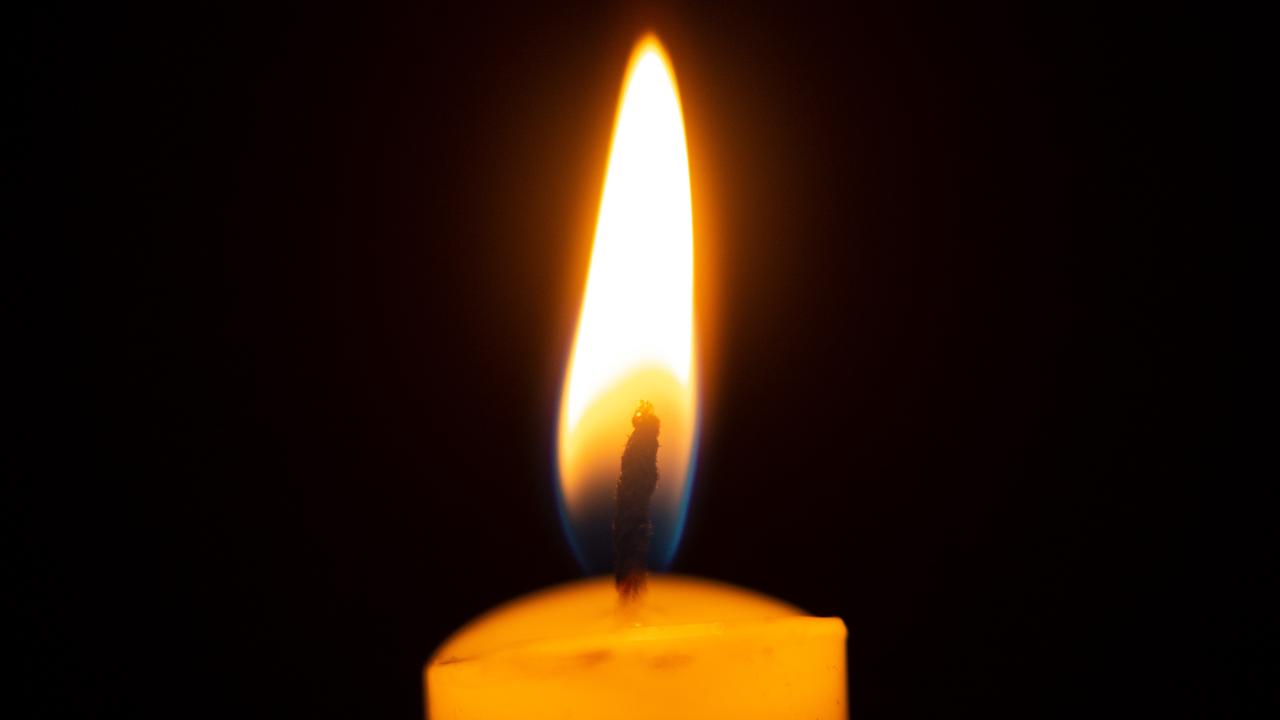Fine man, fine solder... The story of Norlane’s namesake
Norlane is named after Norman Lane, who died an agonising death as a POW on the Burma-Thailand Railway. We share his story here.

ANZAC Centenary
Don't miss out on the headlines from ANZAC Centenary. Followed categories will be added to My News.
NORM Lane joined the AIF during July, 1940, and trained with one of the infantry battalions as a reinforcement to a 7th Division battalion.
During the early part of 1941, and like other members of the AIF who had been training in Australia without any apparent sign of being sent overseas, Norm volunteered for a transport company being formed, said to be sailing for overseas almost immediately.
This unit was the 4th Motor Transport Company. With other members of the 8th Division, this unit sailed from Sydney on Food Friday morning in April, 1941 — on the 37,000 (sic) luxury liner Nieuw Amsterdam — destination Singapore.
Upon arrival at Singapore, the 4th Motor Transport was sent to Malacca, an old Portuguese town on the west coast of Malaya.
After several months of acclimatisation and training the unit was transferred to Singapore Island, a few hundred metres from the Singapore post office and alongside Keppel Harbour.
Norm Lane became a driver, the unit vehicles being large three-tonne Ford Marmon Herrington Trucks from Canada.
When Singapore was bombed on the 8th December, 1941, the unit was dispersed to the west coast of Singapore in a large rubber plantation.
It operated from there day and night during the whole of the Malayan campaign.
As a soldier Norm was regarded by his officers as being dependable and conscientious and also highly regarded by all other members of his unit.
He was a fine soldier and a gentleman.
As was the case with almost all other members of the 8th division, Norm became a prisoner of war with the fall of Singapore on 15th February, 1942.
A few days later, Norm’s unit was transferred to Changi, on the east coast of Singapore Island.
This camp which covered a very large area represented the peacetime barracks of several British army units.

In April 1942 Norm was sent with 2000 other Australian and British troops to an area known as Adam Park, which represented the homes of administrative staff of the Singapore government.
The task to which these 2000 P.O.W. (Prisoners Of War) were assigned was the construction of a road around the Singapore golf course which adjoins the McRitchie Reservoir.
After several months working with others on pick and shovel Norm offered his services as a steam roller driver.
A custom had been established earlier by Pte Bill Cummins of the same unit as Norm that each steam roller driver would report to the Japanese storeman each morning to draw a gallon of petrol with which to start his steam roller.
Norm had to fall into line with the scheme, as soon as he became a steam roller driver. Of course the petrol was not required to start any steam roller but the exercise helped to earn a few extra dollars when the petrol was sold to the Chinese traders outside the wire at night!

Work on the road and a Japanese shrine overlooking the McRitchie Reservoir and golf course was completed in December, 1941, and those at Adam Park were sent back to Changi shortly after Christmas.
During the few months at Changi, Norm would have been employed on trailer parties carting firewood for the cookhouses, or in the camp vegetable gardens.
In April 1943, the Japanese called for a working party of 7000 men, to be known as F Force.
It was indicated by the Japanese that the party was being sent to a camp where food and conditions would be far better than Changi.
Norm Lane was one of those to join the party and left Changi camp on Good Friday morning, the 23rd of April, 1943, with 600 other Australians.
This party of 600 Australians was known as F6, and was sent to Thailand in steel sided rice trucks, a journey which took five days before reaching their destination at Ban Pong, approximately 80km west of Bangkok.
The trip was not a very happy or comfortable one, bearing in mind that Singapore itself is one degree north of the equator, and with six meals in five days and most of these merely plain rice and watery stew the 600 were exhausted by the time they reached their destination.

With about 28/30 men to a truck, conditions were cramped and sleep well nigh impossible.
On arrival at Ban Pong, the men were informed that they would have to march to a camp further north near the Burma border.
The distance was 300km and an almost impossible task for many of the men who had, because of the Japanese deception of a better camp/conditions, been especially discharged from hospital at Changi.
The march took from 28th April, 1943, until 19th May, each stage of the march being at night and with little opportunity to rest during the day owing to the heat and flies.
There was no shelter at all at any of the staging camps, many of the men were suffering from dysentery, blistered feet, malaria and of course were exhausted due to lack of adequate sleep.
It became apparent that conditions were not likely to improve, and Norm and I talked about the possibility of escaping once we had reached our destination.
However, any such idea was abandoned when we saw the density of the jungle and considered how far we would have to go before reaching friendly territory.
No-one made a successful escape from the Burma Railway.

At Shimo Sonkurei Camp, Norm worked on construction of the railway line but the most arduous task he and another small group were asked to perform was to collect rocks from the bottom of the nearby creek bed.
These rocks were required for the maintenance of the road which brought up Japanese supplies to Burma and also our rations.
The men were forced to stand in the cold water for hours, usually more than waist high and retrieve the large rocks.
Because of the cold and the wet, Norm contracted pneumonia from which, without adequate medical supplies and attention, he never completely recovered.

During the first few days of August, 1943, the camp was vacated by Australians and occupied by native workers.
When we marched past there several months later after the railway had been completed, the camp had been almost taken over by the jungle again, such was the growth of the area where we worked.
Norm was transferred to another camp — Kami Sonkurei — further north and the closest camp to the actual Thailand/Burma border near the Three Pagoda Pass.
Norm’s health continued to deteriorate especially after he, like everyone in the camp, contracted malaria and then beri beri.
Like hundreds of others, Norm lost weight rapidly until he was down to around six stone.
Because of the lack of proper medical supplies and proper food he was reduced from a very strong and fit 13 stone to a little more than six stone.
The day before he died, I carried him out from a hospital ward to the latrines — in my arms because he was too weak to walk.
On the 20th September, 1943, I made the following notes in my shorthand diary:
Railway apparently finished — now working on road. In quarry today crushing stone. Very miserable weather and camp again very muddy.
Knocked off about 8 o’clock. Death rate very high. 12 English and 4 Australians died last night.
Norm Lane died this morning from cardiac beri beri.
I hope that his name and his story will be remembered by all in the Norlane area. He was a fine man and a fine soldier.
NORMAN GONE, NOT FORGOTTEN

NORMAN Lane was emaciated by hunger and tropical disease the day his mate Jim Boyle lifted him up in his arms.
Together they made an image of tender grace against a backdrop of abject inhumanity.
Work as a prisoner of war on the Thai-Burma Railway had all but sapped Private Lane of life and his mate was determined to afford him the dignity of making it to the latrine.
He had malaria, he had beri beri. He had slaved for month upon horrific month at the hands of Japanese forces, improbably carving a rail line through environment so hostile, on a diet so thin and cruel.
His frame had wasted from a robust 83kg to a harrowing 38kg, and the day after Jim Boyle’s simple act of mateship and kindness Norman Lane joined the awful toll in a camp that reeked of death.
In life Jim Boyle had known him for important things, being highly admired by peers, dependable and conscientious.
In death Mr Boyle’s tribute stands for time: “He was a fine man and a fine soldier.”
Private Norman Lane was 32.
He was one of 11 children and in days when the world had been kinder he lived with his bride Elizabeth and child Isabel up on Donnelly Ave on Geelong’s northern fringe bordering North Geelong and North Shore.
He was a panel beater and worked at Ford.
In the years following World War II the vacant blocks of his home neighbourhood filled in a way he might not have foreseen, as the Victorian Housing Commission built street after street of houses for the workers powering the flourishing nearby industries.

The growing suburb required a new name and its progress association sought to pay a lasting tribute to one of its own. Norlane was born. Most of Geelong has never known the full account of Norman Lane’s last days.
James “Jim” Boyle, formerly of Anglesea and author of the memoir Railroad to Burma, preserved what he knew in an account typed decades ago and presented to Corio Shire for archiving. “This is his story as I was with him during his service to our country,” Mr Boyle said.
The testimony was duly filed and has surfaced more than seven decades after Norman Lane’s death, in the hands of Brian Dunn, secretary of the Geelong and District Sub-branch of the National Servicemen’s Association.
Mr Dunn said he was forwarded the work by the last president of former Corio Shire, Neville Lewis.
“I was astounded when I first read this, I really was,” Mr Dunn said.
“To me it’s a document which should never be lost and should be a major part of this city.”
Norlane has one small plaque acknowledging the death of Norman Lane and the naming of the suburb.
Mr Dunn hopes to have simple information signs installed on the Princes Highway at Norlane’s northern and southern perimeters to better acknowledge the name.

As one of 11 – five girls and six boys – Norman Lane’s extended family is large and many members remain in and around Geelong.
Nephew Donald Lane, 76, of Corio, said Norman was fourth-eldest among his siblings and eldest brother Les served in World War I.
Many of the family members worked at Ford. Their dad Alexander, who had shifted to Geelong off the land in the Wimmera after losing much in a fire, died while working at Geelong’s former Yarra St pier in the late 1950s when he was struck by a falling sheaf of wheat while working in a ship’s hold.
Donald Lane said his uncle Norman was remembered fondly.
“Norman was a great believer in family growing up, and with his young family,” he said.
“He was a general sort of a fella … and I believe he helped a lot of his soldiers. He was very genuine.”
Jim Boyle cared for Norman Lane until his last hours and later preserved his recollections. “I hope that his name and his story will be remembered by all those in the Norlane area,” he said.


